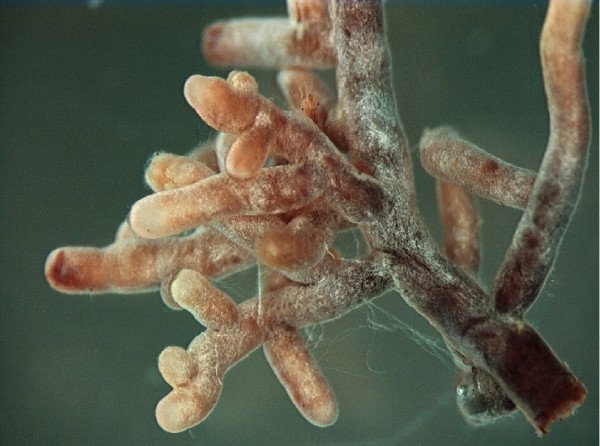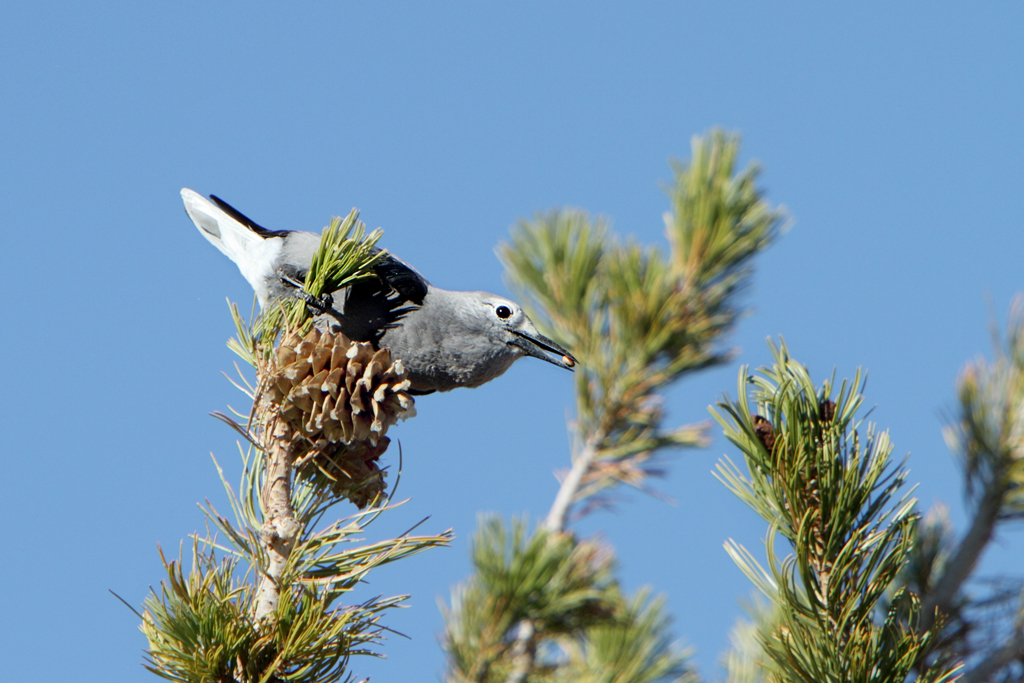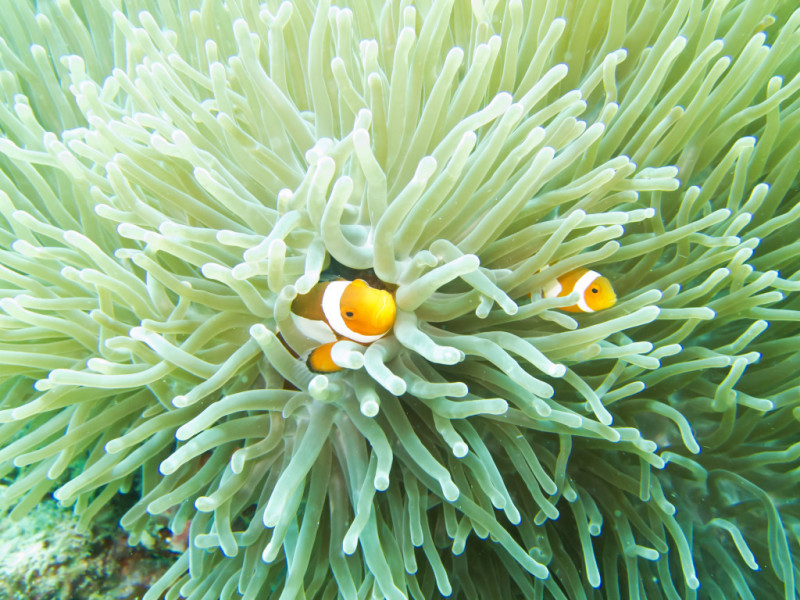Nature's Unifying Patterns
Detailed descriptions and examplesNature provides mutual benefits.
Among the variety of ways that organisms interact with each other, there are many examples of interactions that provide mutual benefits. The benefits may be simple byproducts of specific behaviors—for example, when one organism’s waste is another organism’s resource—or they may arise out of close relationships that evolved over time. Mutualistic symbioses are one example of a close relationship between different kinds of organisms, where all the partners benefit from the relationship. Another kind of close relationship includes cooperation among members of a family group.
Even interactions that normally harm an organism, like predation or parasitism, can include benefits when viewed at a different level. For instance, a male praying mantis might be eaten by his female mate after mating, providing beneficial nutrition to the female that will eventually bear his offspring.
Biology Examples

Mycorrhizal root-tips of amanita muscaria.
Mycorrhizal fungi
Mycorrhizal fungi have a mutualistic relationship with many plants. The fungi grow attached to plant roots underground and dramatically increase their ability to absorb key soil nutrients, especially phosphates. In exchange, the plants feed the fungi attached to their roots with sugars generated by photosynthesis. The fungi’s finer filaments and greater surface area allow the fungi to take in nutrients from a greater volume of soil, and their enzymes can make mineral phosphates usable for the plant. Some mycorrhizae also support plant nutrition by hosting nitrogen-fixing bacteria that contribute nitrogen that can be absorbed by the plant as well.

Clark’s nutcracker
The Clark’s nutcracker is a bird that has a mutualistic relationship with the white-barked pine tree in the western United States. The nutcracker is the primary seed disperser of the white-barked and other pines. In large cone-production years, one nutcracker is able to collect and store in the ground 3-5 times more seeds than she actually eats. The birds benefit through this relationship by getting high-calorie seeds to eat, and the tree benefits because the birds bury the seeds for storage at just the right depth to later germinate into seedlings.

Clownfish and sea anemone
Another example of a mutualistic relationship is that of the clownfish and the sea anemone. For protection, clownfish seek refuge among the tentacles of sea anemones. The tentacles contain harpoon-like stinging capsules called nematocysts that the anemones employ to capture prey and ward off predators. However, clownfish have mucus on their skin that protects them against the sting of their host anemone. As a result, the clownfish are able to stick near their host, protected from most other fish in the sea. In addition, the nutrients from the waste produced by the clownfish nourish the anemone. Butterfly fish, however, are able to prey on sea anemones. In certain areas of the tropics where clownfish, sea anemones, and butterfly fish coexist, clownfish scare off butterfly fish from their host anemone. So, the protection of the anemone by the clownfish is part of the cooperative relationship.
Design Applications

Masins building
The historic Masins Furniture Building in downtown Seattle, WA, houses several social entrepreneurial organizations, including the HUB Seattle (a co-working business incubator), the Bainbridge Graduate Institute, and Organizational Systems Renewal, a non-profit organization. These organizations not only share space and infrastructure—and the associated expenses—but they also share ideas, projects, and clients for the mutual benefit of all involved, while keeping their individual identities and unique orientations alive.

EmptyMiles
Historically, over 24% of long distance trucks on the road in the United States carry no cargo on their return journeys. This increases the costs of transporting goods, results in unnecessary carbon emissions, and causes a host of other traffic, human, and environmental harms. Voluntary Inter-Industry Commerce Solutions, an industry-led body looking to improve the efficiency and effectiveness of the entire supply chain, launched the EmptyMiles website to enable companies to cooperate to fill empty trucks on their return journey with loads that can be delivered on the way home. EmptyMiles is set up to make it easier for the supply (the trucking companies) and demand (the retailers and manufacturers) of the supply chain to qualify, meet, and collaborate to form these relationships. The cooperative relationship can be both short- and long-term.
Image Credits
Myccorhizal fungi: Nilsson et al via BioMed Central Ltd. CC-BY
Clark’s nutcracker: Alan Vernon CC-BY-NC-SA
Masins building: courtesy of 220 & Change
Semi Truck: MoDOT CC-BY-NC-SA


